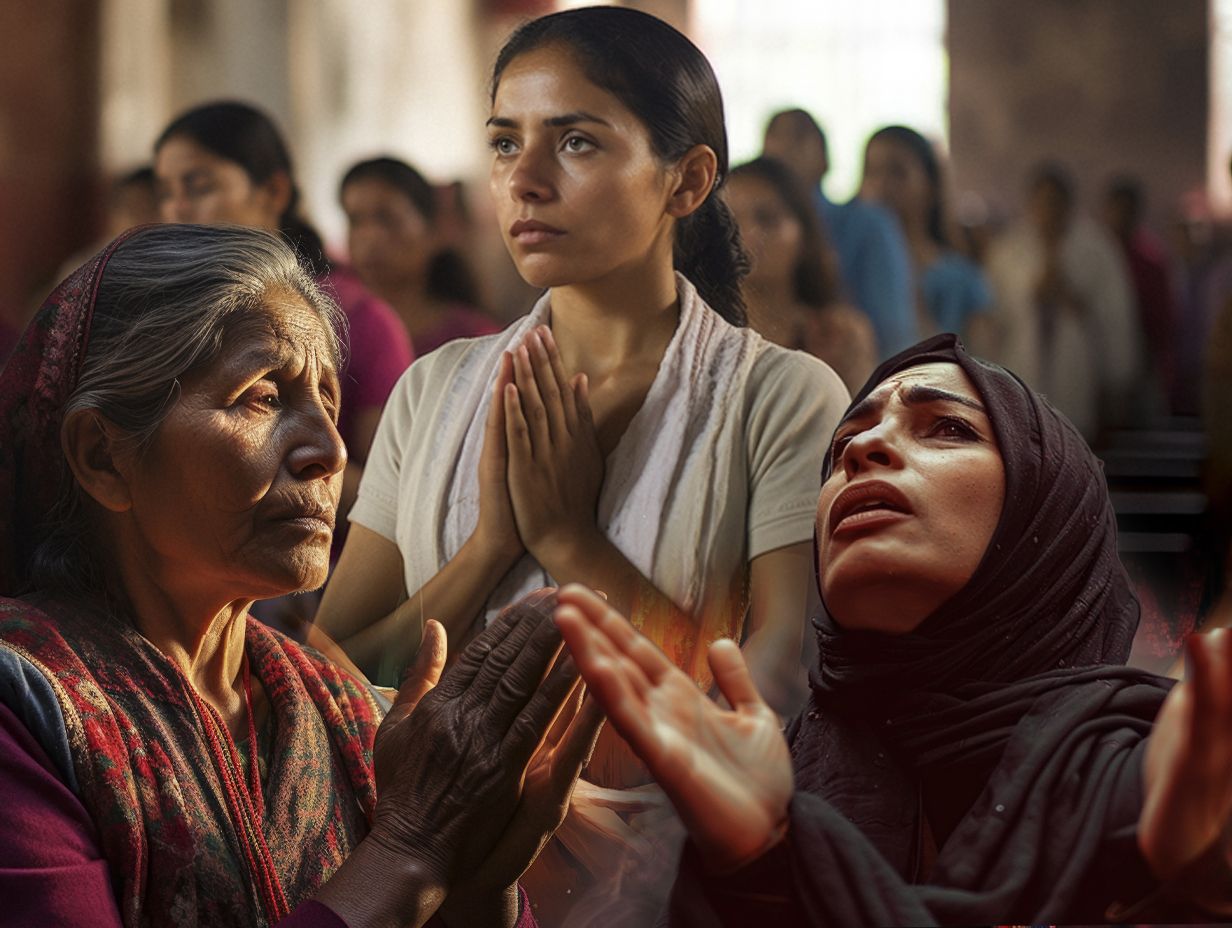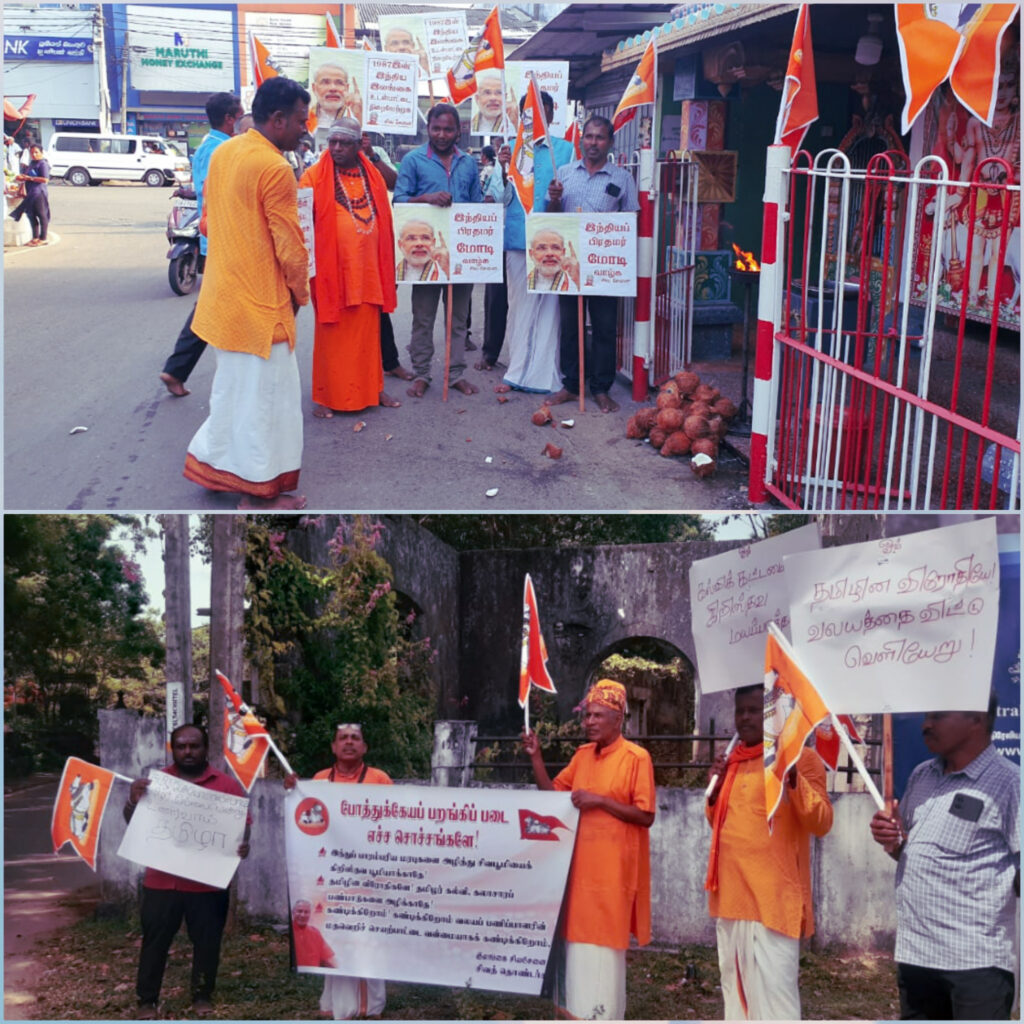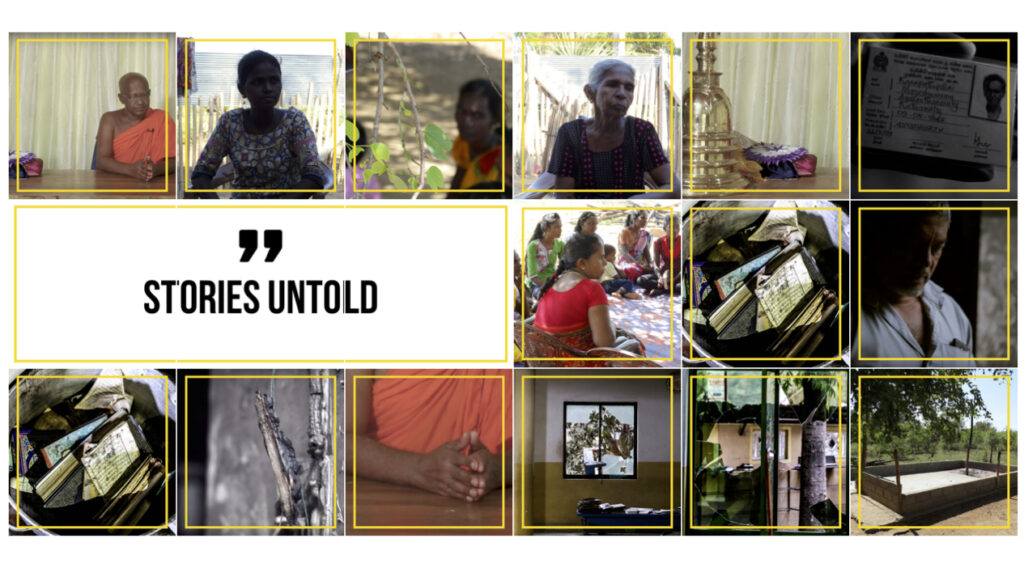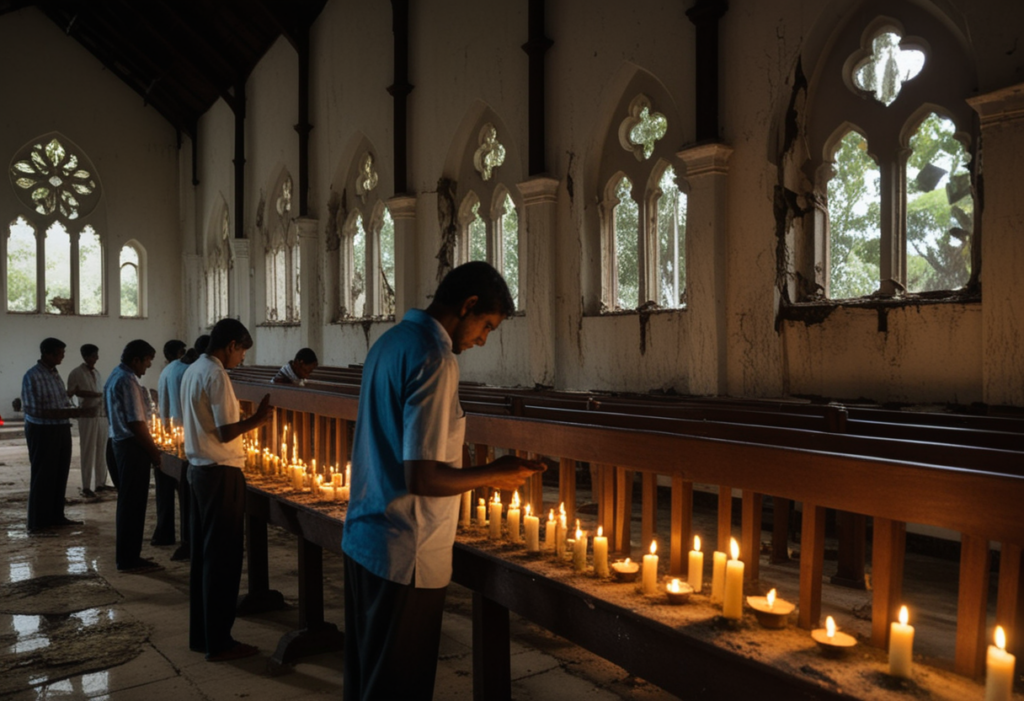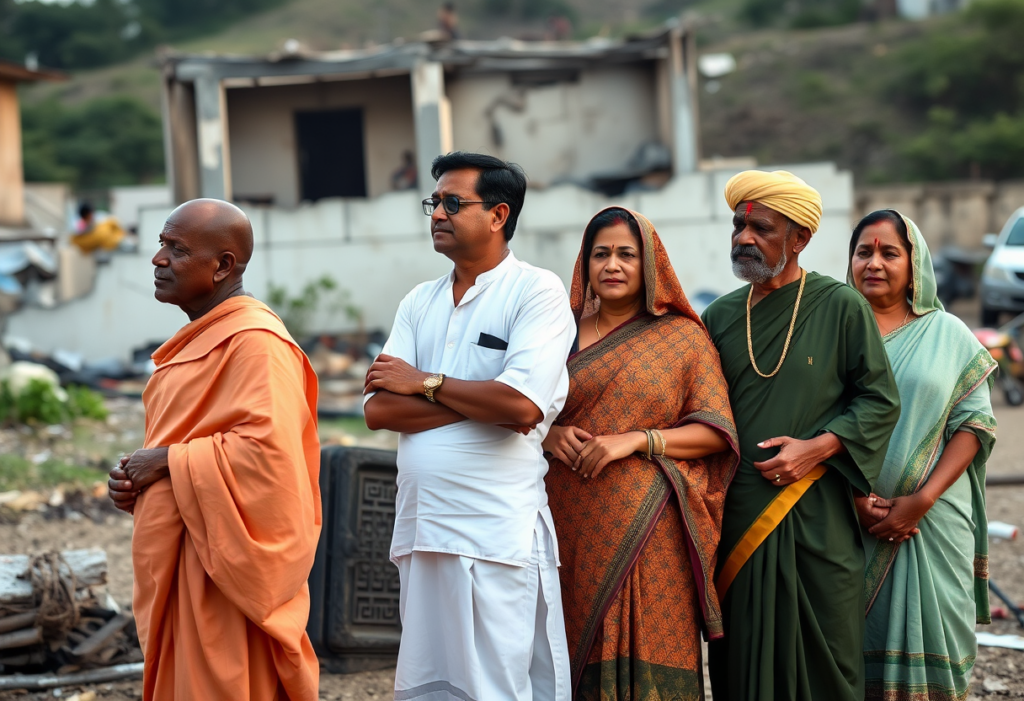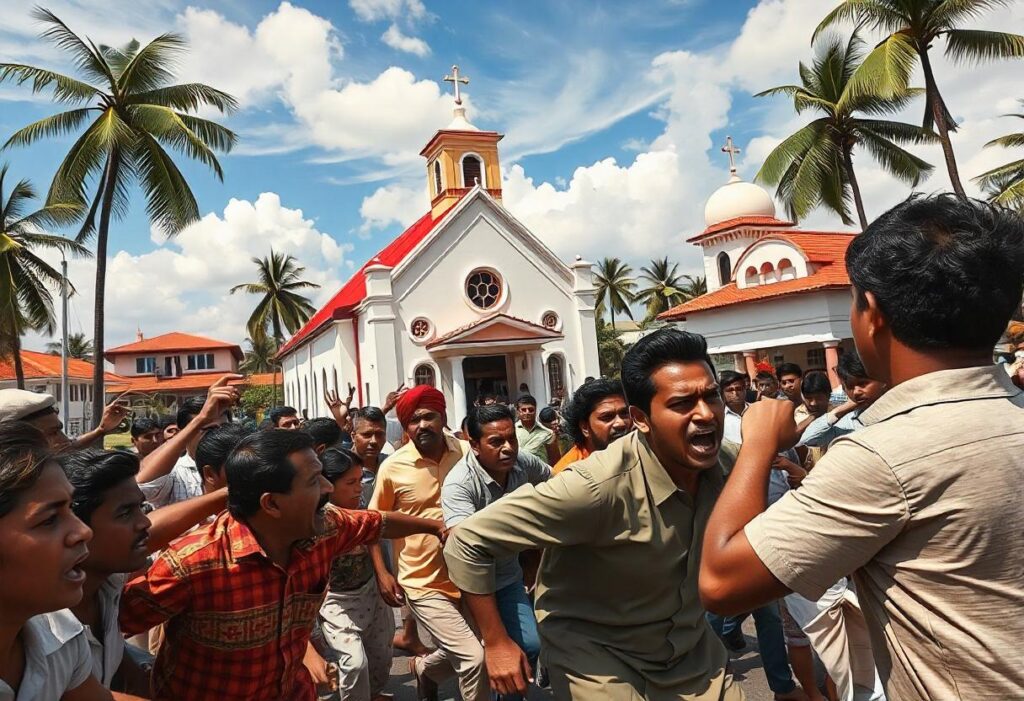“One of the men who shouted at me in filth, threatened to strip me and force me to walk naked on the road. ‘you will be crucified just like your Lord Jesus’ they said. They tugged at my saree and repeatedly threatened to undress me.” – Sister Ruth, Christian Ministry worker, Sri Lanka.
“He was tying me and beating me hard with a whip because I refused to submit to his brutality, so he raped me… He raped me several times, and then he sold me for a profit.”- Layla Talu, Yazidi woman on the ISIS captivity.
‘Nima’, a tribal Christian girl, was sold into slavery, beaten, drugged and raped multiple times by her persecutors. After she was rescued, the police initially refused to register her case.
Tragically, most persecuted women have similar stories. These stories are the brutal and terrifying reality of most women around the world where religion is often correlated to hate and extremism.
Why are women more vulnerable to persecution?
There are many reasons that render women more vulnerable to persecution. One of the significant factors which influence the increased susceptibility of persecution of women is the cultural and generational view which considers a woman as inferior or secondary to a man. A study done by Open Doors USA, states that sexual violence, which is a predominant method of punishment of women, is done as a way of portraying power and control over the woman. Helen Fischer, a women’s strategist, and specialist at Open Doors International says; “crimes committed against women are more likely to engender shame and ostracism than those committed against men…”. Therefore, shaming and shunning is one of the key pressure points used to persecute women. In such an instance, the women are often further victimized due to the moral and social pressure of shame which dictates that a woman ought to uphold her honor.
A woman’s sexual purity is more often used as a measurement of her worth and therefore, leaves significant room for vulnerability, as perpetrators could easily use it to as a method of persecution. This is one of the main reasons, women are caught in a continuous cycle of persecution. Even after being a victim of persecution, most women are reluctant to come forward with their stories and choose to suffer in silence as her story would bring her more dishonor than hold her perpetrators accountable. This results in women not being afforded any opportunity to heal physically or emotionally and isolates her from any form of support. She is often led to suffer alone or to pick up the pieces and move on by herself. Further, this also results in many such perpetrators of these heinous crimes not being brought to justice, as the crimes are not reported in the first place, out of a misplaced sense of ‘shame’ and of safeguarding the reputation of the woman.
The data gap plays an extremely significant role too. Caroline Criado Perez, a British author in her book titled “Invisible Women: data Bias in a World Built for Men” brings forth the notion that since women are not counted, their experiences aren’t either. For an example, in Nepal, The National Strategy for the Development of Statistics (NSDS) does not specifically mention gender statistics. The 2019 Annual Women Count Report by the UN states that a national assessment on gender statistics conducted in 2018, reveals that Nepal lacks mechanisms to monitor many SDG targets, with data available for only 37% of all gender-related global indicators. Most data are extracted from national censuses and surveys, which are undertaken only every 5 or 10 years, limiting their effectiveness. Thus, addressing these gender gaps is paramount for understanding the situation of women and girls in Nepal.
Another reason which makes women more vulnerable to persecution is the inadequacy of female representation in places of power. This is coherent with regards to the legislative representation of women in Asia and the Middle East, as the percentage of men in Parliaments and Governments are higher than women. Only 4 out of 193 countries have at least 50% women in national legislature. The fact that there aren’t enough women in power, leaves lesser opportunities for women to speak for their rights and advocate for Gender Equality.
One such example of the low representation of women in Parliament, is the Sri Lankan Parliament. During the term of the last Parliament (2015 -2019), of the 225 members of the parliament, only 13 (later 12) female Members were appointed. The women in Sri Lanka make up to 52% voters. However only 5% of women are appointed in legislative positions. The appointment on women in the Parliament will grow to prioritize the quality of education of women and give a much stronger voice for the victims of persecution to come forward with their stories, raise awareness and work towards creating a better and safer space for all women and girls. Women should be adequately represented in politics simply to ensure that their needs are considered, and their rights are safeguarded.
In addition, the persistent discrimination faced by women belonging to minority religious groups provides an extremely powerful foundation for religious persecution. A clear portrayal of the prevalent religious discrimination against women is evoked by Sri Lanka’s ban of the burqa and niqab in 2019. In the aftermath of the mass attack which took place on the 21st of April 2019, which left over 250 lives deceased and the rest of the frailest of the targets in hospital beds and broken homes filled with mourning and despair, Sri Lanka was successful in going the extra mile to level up as the perfect storm of a failure as a country, where a gazette was issued by the former President Maithripala Sirisena banning all face veils.
An article by Daily FT, reports a narration by Al Jazeera where a range of people including Sri Lankan Muslim women share their views on the ban. The article entails the opinion of Qaanita Razeek, who states that, “While I understand that there is a difference in scholarly opinion about the wearing of the face veil, I made the choice to wear the niqab 16 years ago and asking me to unveil now is like asking to strip me of my identity.”
It should be noted that when the ban on the burqa and niqab was implemented in Sri Lanka, no women’s rights organization, or council was contacted regarding this. Since ancient times, women have been serving as the bullseye in a dart game, and it is extremely disheartening that even today, a man dictates what a woman ought to wear.
How are women persecuted?
According to a research done by Open doors, there have been many stories of women who have undergone persecution of various methods such as rape, intimidation, mockery, isolation and beatings etc. Furthermore, according to 59% of the 50 nations that were reviewed, rape was portrayed as an ordinary and regular action for religious mistreatment and 47% said assault was additionally regular identified with a woman’s Christian faith.
In many regions of the world, sexual violence seems to be the most prevalent means of exerting power and control over women.
Forced marriage is another form of persecution of women and girls. Although it seems as if this option, comparatively provides the woman with some sort of an appearance of respectability, it is sometimes merely a contract for sexual violence from which a woman will never be able to escape from.
In countries such as China, impoverished Pakistani Christian women are being exploited in ways of forced marriages, forced prostitution, and victimizing them from trafficking of organs. In an article by the Persecution International Christian Concern, it states that; Saleem Iqbal, a Christian human rights activist who has been tracking such forced marriages of impoverished Pakistani Christian women to Chinese men, believed that at least 700 women who are mostly Christian, had wed Chinese men in just over a year.
During the 2007 Yazidi community bombings, several groups of people left for Syria, Iraqi Kurdistan and mount Sinjar which is the heart of the Sinjar region. The women and girls were subject to sexual violations, mass killings and auctions by the ISIS. Women who were unarmed were prayed on and sold by organizing a slave market which went through a very bureaucratic procedure where men were welcomed to place their bids both offline and online. The market price of a woman was based on her virginity.
These women and girls were beaten, forced to labor, kept in conditions where there was no care, often provided with very little food and heat in winter. It was very much a system of poverty where if a woman’s owner dies, the woman would belong to the Islamic State. Girls under the age of 9 were kept with their mothers and were sold as packages throughout the ISIS caliphate until the children reached 9 years of age to be sold separately.
Another huge issue faced by these Yazidi women is their children born of genocidal rape mainly due to the financial dependency of a woman. Yazidi women who were sold would sometimes be chased out of their own communities when they try to come back, since the woman has been in contact with a non-Yazidi man. Some of these women were subject to further victimization by being cast away from their communities, forced to give up their children and sometimes raise their children alone with no financial support.
In 2014, Boko Haram kidnapped over 200 Christian girls from their school in Chibok, Nigeria and forcibly converted many of them to Islam and were sold as brides to Nigerian, Chadian, and Cameroonian soldiers.
Recently, a Christian Ministry worker in Sri Lanka named Ruth visited the home of one of her congregants to pray for their family. On her way back, she was surrounded by a group of around 200 people who questioned her and threatened her.
“One of the men who shouted at me in filth, threatened to strip me and force me to walk naked on the road. ‘you will be crucified just like your Lord Jesus’ they said. They tugged at my saree and repeatedly threatened to undress me. They probably think that it is inappropriate for a woman to serve God. When I turned to one of the Buddhist clergymen to help me, he said, ‘what did you expect? When you decided to serve your God, you should have been ready to accept this sort of shame!”
The Great search for hope
Women and girls who are victims of religious persecution, are often overlooked, mostly as a means of covering up a ‘shameful’ incident. Thus, such women and girls must be given a platform to voice their suffering and find ways to cope through what they were forced to face. Safe spaces should be created for such women to share their ordeal, find support, and move forward in their lives. Especially, psychosocial support should be provided for these women while ensuring that such stories are brought to light instead of being pushed under the rug. The stigma that surrounds these women should be addressed while creating awareness on the fact that victims should not under any circumstance feel shameful over the suffering that they have endured. In addition, more work needs to be put in to holding the perpetrators accountable and bringing justice to the victims of persecution. Law enforcement and legal systems should be strengthened to serve justice on these women and girls.
It is undeniably vital to understand that human suffering is not a concept or conjecture. While justice for these women is like boiling an ocean, their suffering is not an abstraction. So, we come to the realization of both the limits and the potential of justice where the gross inadequacy faced with the obscurity of the crimes committed against these women does not seem to matter.
We have become so accustomed to hearing and listening to stories of women and girls who have faced persecution and violence that it no longer seems unorthodox. We have seen too much to feel the same sense of abhorrence towards those who abused these women. It is important to realize that our immunity to their suffering will only contribute towards the endless cycle of abuse and violence. While we choose to be immune to what we’ve heard and seen, there is a woman out there who is being brutally abused for her faith, who does not have the privilege as the rest of us.

